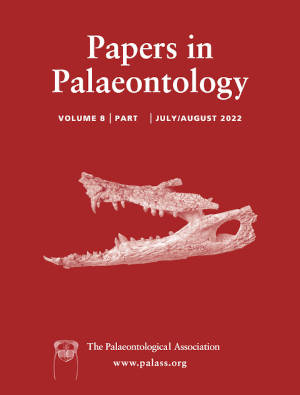Article: The dawn of the flying reptiles: first Triassic record in the southern hemisphere
Publication: Papers in Palaeontology
Volume:
8
Part:
2
Publication Date:
2022
Article number:
e1424
Author(s):
Ricardo N. Martínez, Brian Andres, Cecilia Apaldetti, and Ignacio A. Cerda
DOI:
10.1002/spp2.1424
Abstract
Abstract Pterosaurs were the first vertebrates to evolve powered flight. The timing of their origin is still debated, and hypotheses range from the end of the Permian Period, to the lower Mesozoic Era, and through to the Middle–Late Triassic epochs. Regardless of when they originated, the oldest records are restricted to the Upper Triassic Norian Stage in the northern hemisphere (Europe, USA and Greenland). We report two new raeticodactylid pterosaurs, Yelaphomte praderioi gen. et sp. nov. and Pachagnathus benitoi gen. et sp. nov. from the upper Norian to Rhaetian Quebrada del Barro Formation in north-western Argentina. The new specimens (an isolated dentary symphysis, partial rostrum, and distal half of ulna) are the first unequivocal Triassic records of pterosaurs in the southern hemisphere, confirming that the absence of pterosaurs outside north-western Pangaea during the Late Triassic was the result of poor sampling rather than true absence. These new discoveries provide evidence of a greater diversity of pterosaurs living in terrestrial habitats and a wider global distribution of pterosaurs from the beginning of their evolution on Earth.
